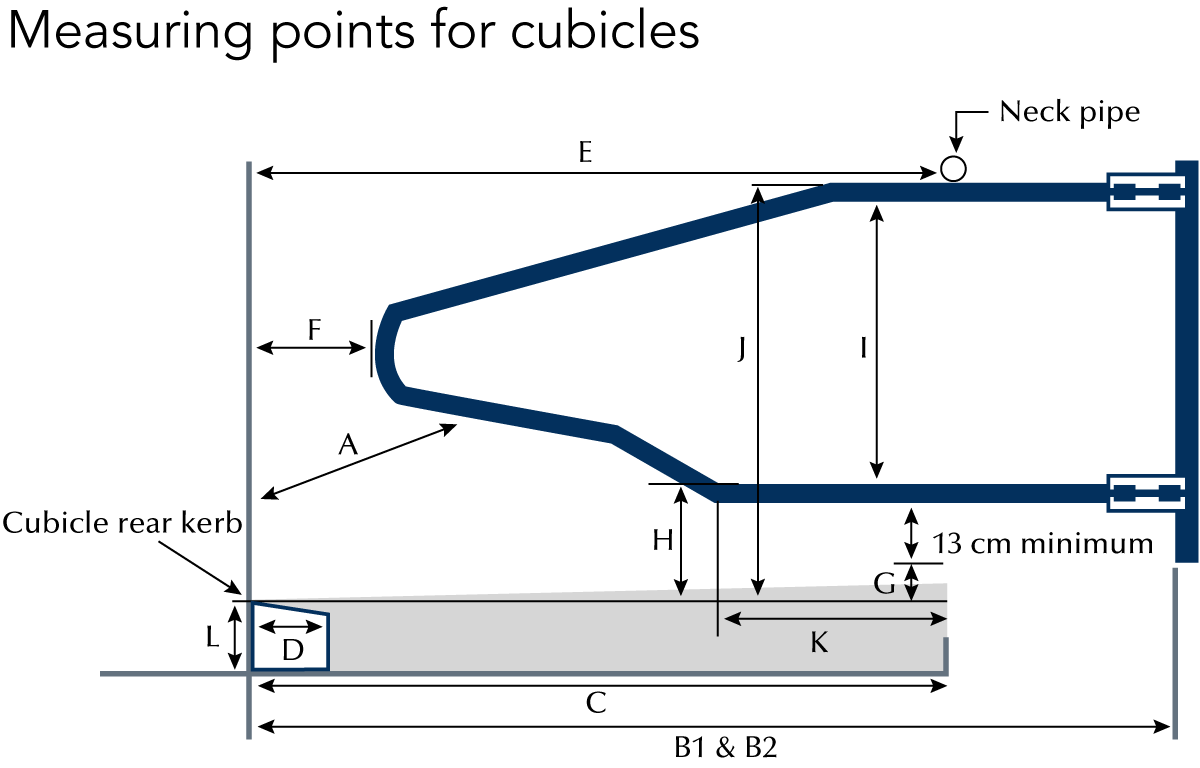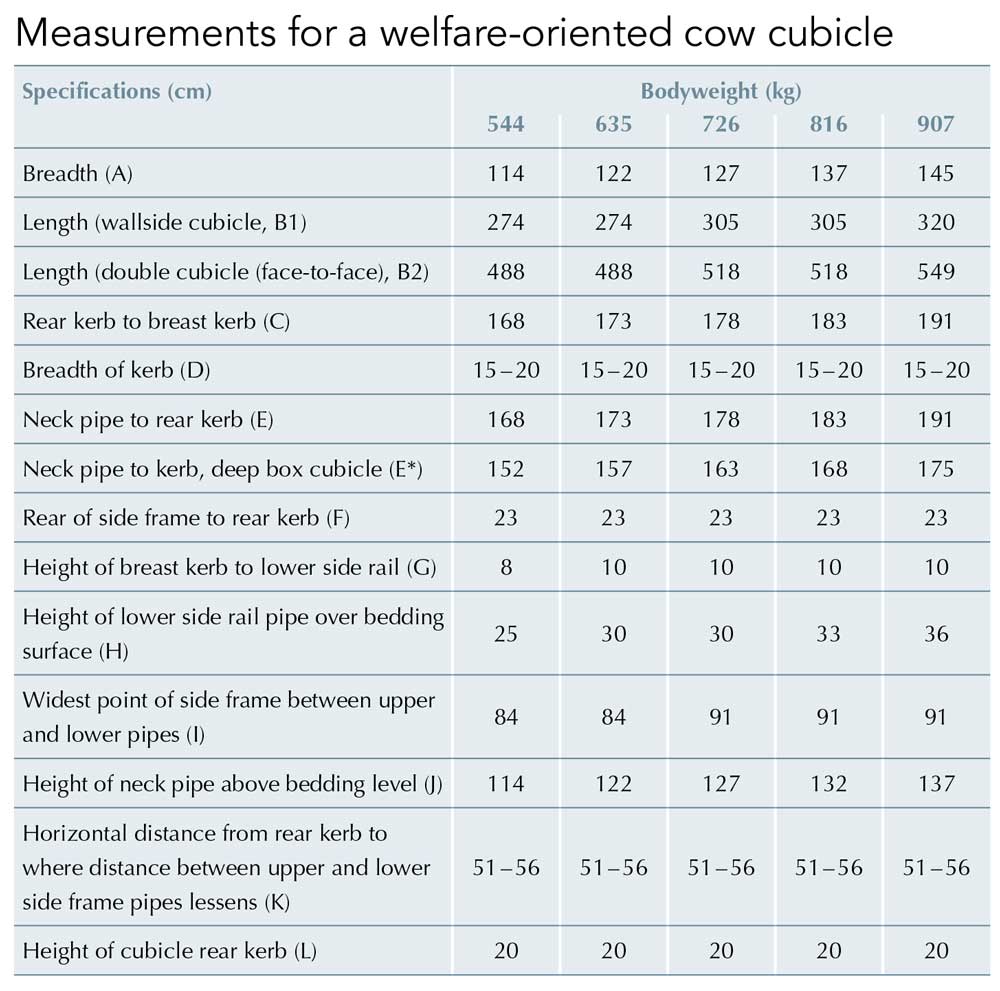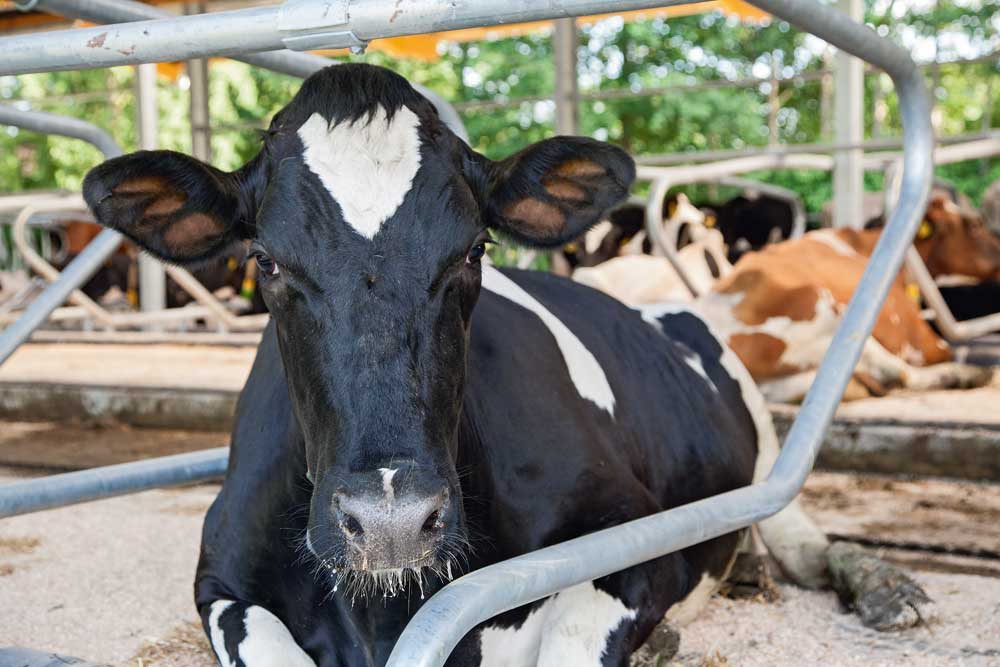Cubicles: Best bedding for cows
By Sibylle Möcklinghoff-Wicke, Dairy Innovation Team
Cubicles have a crucial role in creating the right environment for the milking cow: meeting comfort requirements of all cows during a daily lying time of 12 hours and more.
Decisive factors influencing whether a cow lies or stands are hoof health and the surface attributes and malleability of the lying area. If a cow is in pain with hoof problems, she’ll have even more pain trying to get up or lie down on a solid surface with little give. The result: she remains standing for longer.
The »golden standard« in loose housing against which all other systems can be measured remains a deep cubicle with sand bedding. The sand offers a giving surface that adopts the form of the lying cow. It is also soft and offers a tread-sure surface compared with e.g. a comfort mat. Organic bedding material in deep cubicles has also proved to have similar attributes.
Welfare-oriented dairy cow cubicles
When designing cow cubicles the following points must be observed:
- The lying area, limited up front by the brisket kerb, must still be large enough and must not hamper cow forward lunging movement when getting up and lying down.
- The brisket kerb should not be too high because the cow must be able to stretch her front legs over it, and also step over it when getting up.
- The cubicle railings separate each lying area from those of adjacent cows and must be formed so that normal lying positions for each cow are possible.
- The lying areas must allow enough free room forwards and upwards for lunging movements so that the cow can stretch her head forwards when settling down or getting up.
- The neck rail must be mounted in such a way that the cow has enough room underneath it to get up without danger of injury. The cubicle rear kerb must be high enough to stop slurry slopping onto the cubicle surface during passage scraping but still low enough to allow cows easy entry and exit, particularly for lame animals.
- The exact dimensions of cubicle position-controlling components are thereby dependent on size and weight of cows.
Form of cubicle railings
There are numerous different cubicle railing designs. Their form can have a decisive influence on cubicle comfort and fulfil several functions such as forming the lying area side barriers. Railing design determines the lying position of the cow and enables, or limits, lateral movement. The most important part is the lower rail. Here, there must be a free space of at least 12 to 15 cm between the bottom of the pipe and the upper part of the form to avoid jamming of a front leg under the railing. However, the lower railing must also be high enough prevent the cow clearing it with her front leg and becoming entangled in another way.
The right size in all directions
Too high a side frame can have the additional effect of limiting sideways movement of cows in adjacent cubicles. Even when the cubicle has enough room for forward lunging movement, it is an advantage if the cow also has space for sideways movement. With head-to-head cubicles, it often occurs that the cow in the facing cubicle limits the lunging movement room (individual distance), so that more sideways room is required.
The height of the lower railings should be between 25 and 30 cm over the cubicle lying surface. Additionally, these railings should be straight and parallel to the floor and not reducing in height towards the rear, a form that encourages cows to lie diagonally. In general, cubicle railings that allow sideways movement tend to encourage cows to lie at an angle, leading to both cow and cubicle surface becoming dirty and to an increase in cow injuries.
Straight lying position for the cow
To keep cows lying straight, upwards angling of the lower railing should begin 50 to 55 cm behind the brisket kerb. In this way, the railing no longer represents a pressure area against back and pelvic bones of the lying cow. The distance between upper and lower cubicle railing allows the animal to move neck and head left or right outwith the lying area when leaving the cubicle. Additionally, the amount of open area determines the height of the neck rail. Position of this rail also determines standing position of the cow in the cubicle. It is always in the way when the cow moves forward in the process of getting up. When the measurements are correct, the cow gets up, moves slightly forward and then steps backwards – as long as there are no other hindrances present.
Avoid overstocking if possible
Overstocking (with more cows than cubicles) can lead to reduced lying times in the cubicles. With older milkers, one can get off with slight overcrowding of 1 : 1.2, so long as available cubicles are uniformly acceptable by the animals in terms of size, comfort, etc. But overstocking is not recommended for transit cows and cows in high yield groups.





